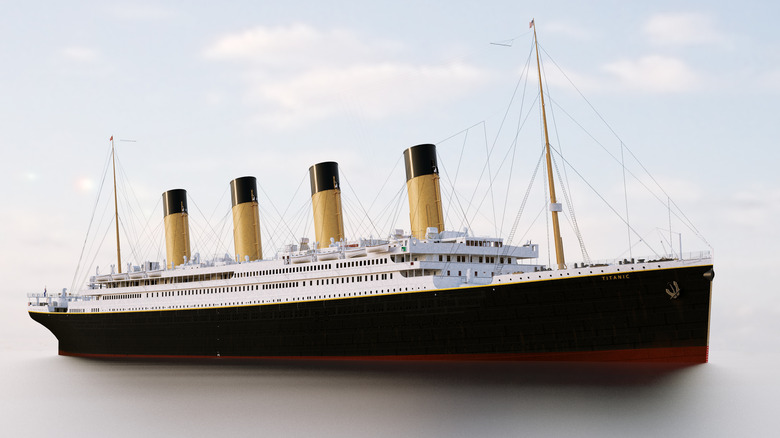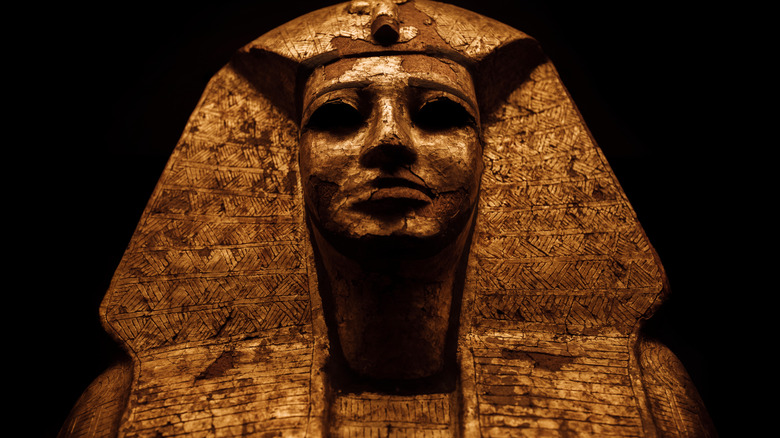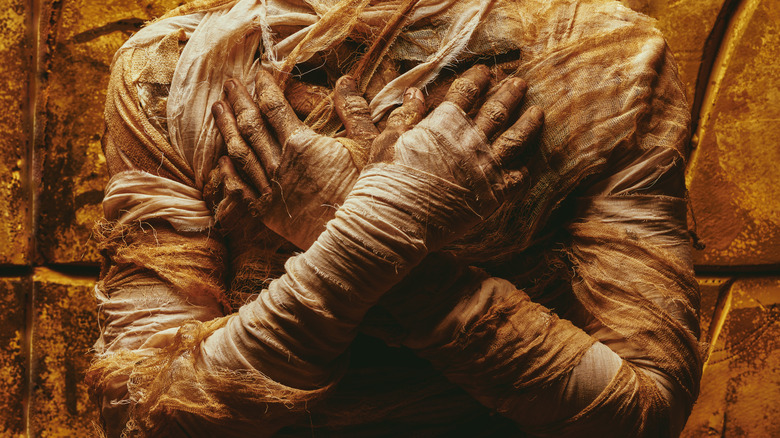Why Some Thought A Mummy's Curse Could Have Sunk The Titanic
On the evening of April 15, 1912, the crew of the RMS Titanic realized the luxury steamship was headed toward an iceberg. Although they managed to prevent a direct hit, the ship grazed the iceberg and was left with a 300-foot slash on the right side of the ship's hull, below the waterline.
As reported by History, more than 1,500 passengers and crew were ultimately killed when the Titanic sank to the bottom of the Atlantic Ocean. In the months and years following the catastrophe, inquiries into the incident questioned everything from the construction of the ship to the officers' and crew's responses after the collision. However, the sinking of the Titanic also sparked a number of conspiracy theories, many of which have persisted for more than a century.
History reports one of the more popular conspiracy theories suggests J.P. Morgan planned the crash to kill his rivals: Jacob Astor, Benjamin Guggenheim, and Isidor Straus. Another suggests the Titanic did not sink at all, and the disaster was staged in an insurance fraud scheme. However, one of the most interesting theories suggests the ship was cursed by an Egyptian mummy.
As reported by Slate, the unlikely story was further perpetuated when The Washington Post essentially confirmed the rumor as fact in an article titled, "Ghost of the Titanic: Vengeance of Hoodoo Mummy Followed Man Who Wrote Its History." As the newspaper was generally accepted as a reliable source, the story garnered a lot of attention and only bolstered the rumors.
The origin of the unlucky mummy story
After the success of its first article about the mummy, The Washington Post published three more similar articles about the "Unlucky Mummy" and its supposed connection with the Titanic disaster. As reported by Slate, the articles were published between 1904 and 1912, and perpetuated the unusual rumors for more than eight years.
Approximately 1,000 years before the time of Christ, a woman, who has since been dubbed "a priestess of the College of Amen-Ra" was born in the city of Thebes, Egypt. As reported by Slate, the identity of the woman remains unknown. However, as she was carefully embalmed and her body placed in a decorated casket, it is believed that she held a high ranking position in the community. As she was buried with other priests and priestesses, it is believed she was also a priestess.
In the late 1890s, archeologists discovered the woman's burial site during a dig near Egypt's lost city of Luxor. According to legend, "a rich Englishman" arranged for the purchase of the mummy and her casket. However, as reported by The Museum of Unnatural History, the man inexplicably vanished before his purchase could be delivered. All three of his travel companions also suffered misfortune. According to legend, one of the men died, another was disabled in an accident, and the third suffered financial ruin.
The Museum of Unnatural History reports the mummy eventually made it to England, where it was purchased by another unnamed businessman.
Was there actually a mummy on the Titanic?
Following his purchase of the mummy, The Museum of Unnatural History reports three members of the businessman's family were injured in a car accident. Months later, his home was destroyed in a fire. As he was convinced the mummy was cursed, the businessman donated it to the British Museum.
According to legend, the museum staff heard noises from inside the coffin and reported a number of unusual incidents that convinced them the mummy was indeed cursed. As reported by The Museum of Unnatural History, a night watchman at the museum died and a man who photographed the coffin reportedly committed suicide. Both of their deaths were somehow attributed to the mummy.
The British Museum reportedly attempted to give the mummy away. However, nobody was interested in what had become known as the "Unlucky Mummy."
Rumors suggest the mummy was eventually purchased by an American archaeologist, who arranged for it to be transported to the United States aboard the Titanic. However, The Museum of Unnatural History reports there were no mummies listed on the Titanic's shipping records. Furthermore, there is no record of the mummy ever being in the British Museum, as it was separated from the coffin before leaving Egypt. The coffin lid, however, remains in the possession of the British Museum.
It has been suggested that the legends were sparked by an Egyptian sarcophagus, which was being transported to the United States from England, that was lost during the sinking of the Beatrice.


